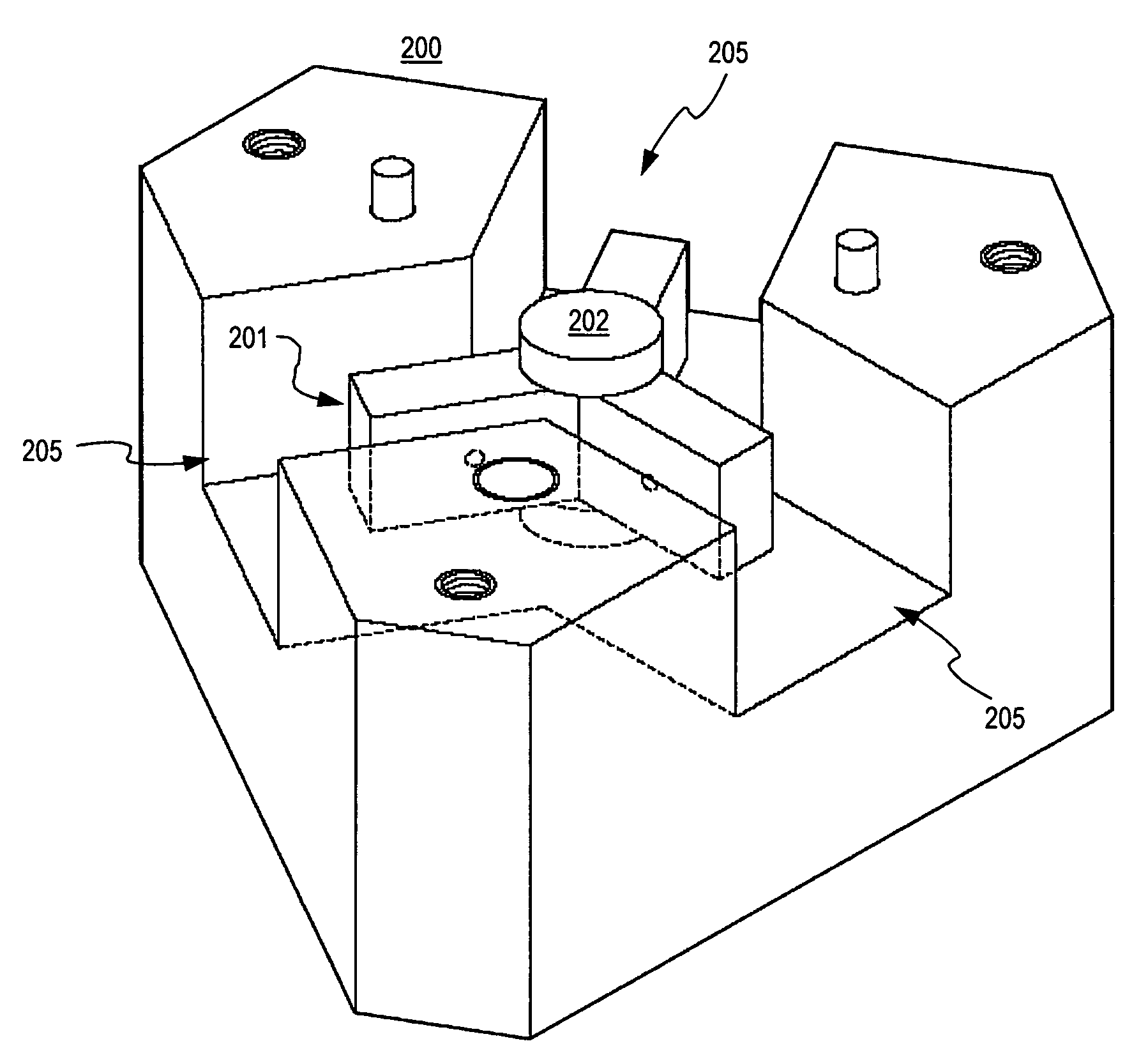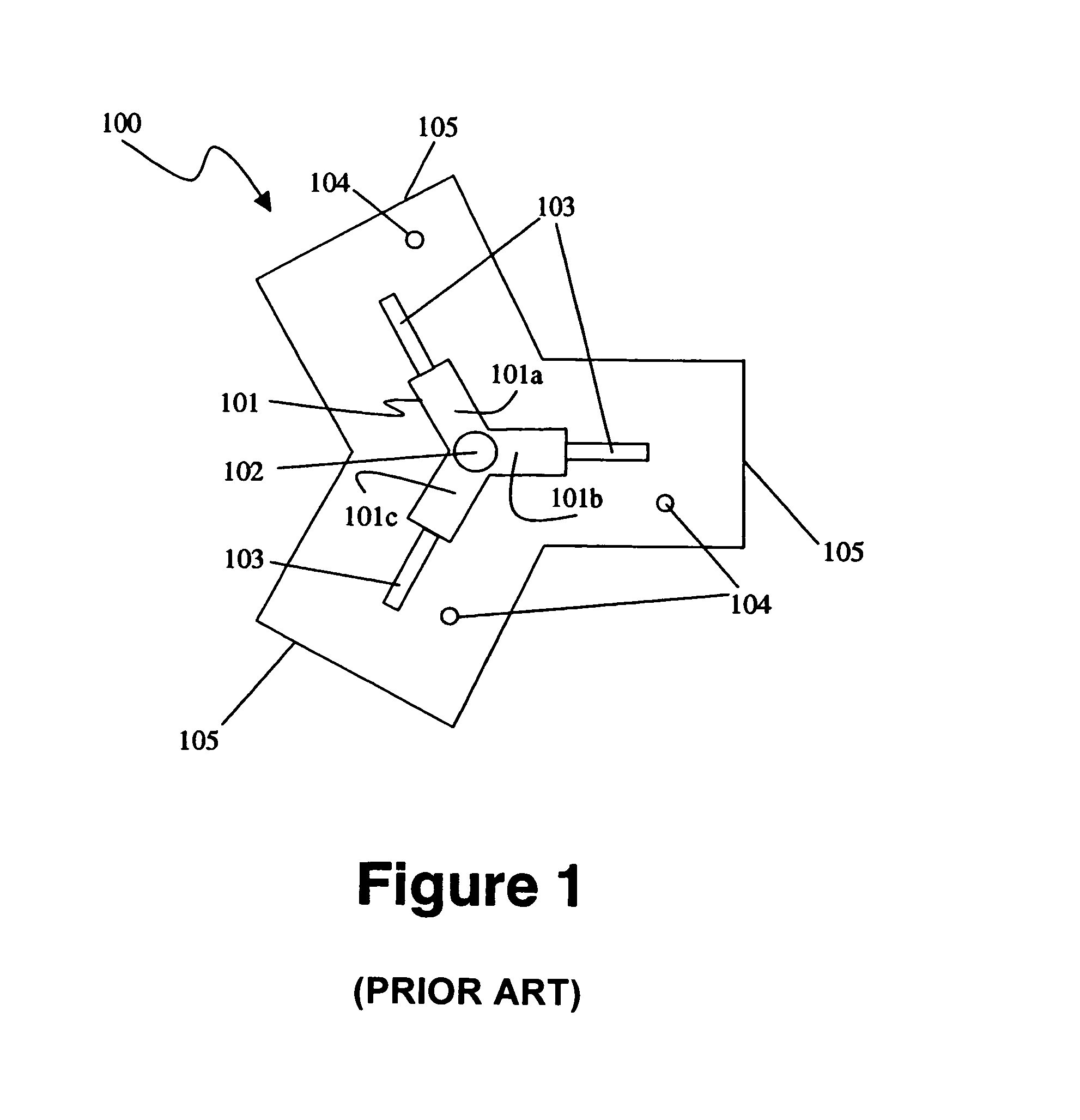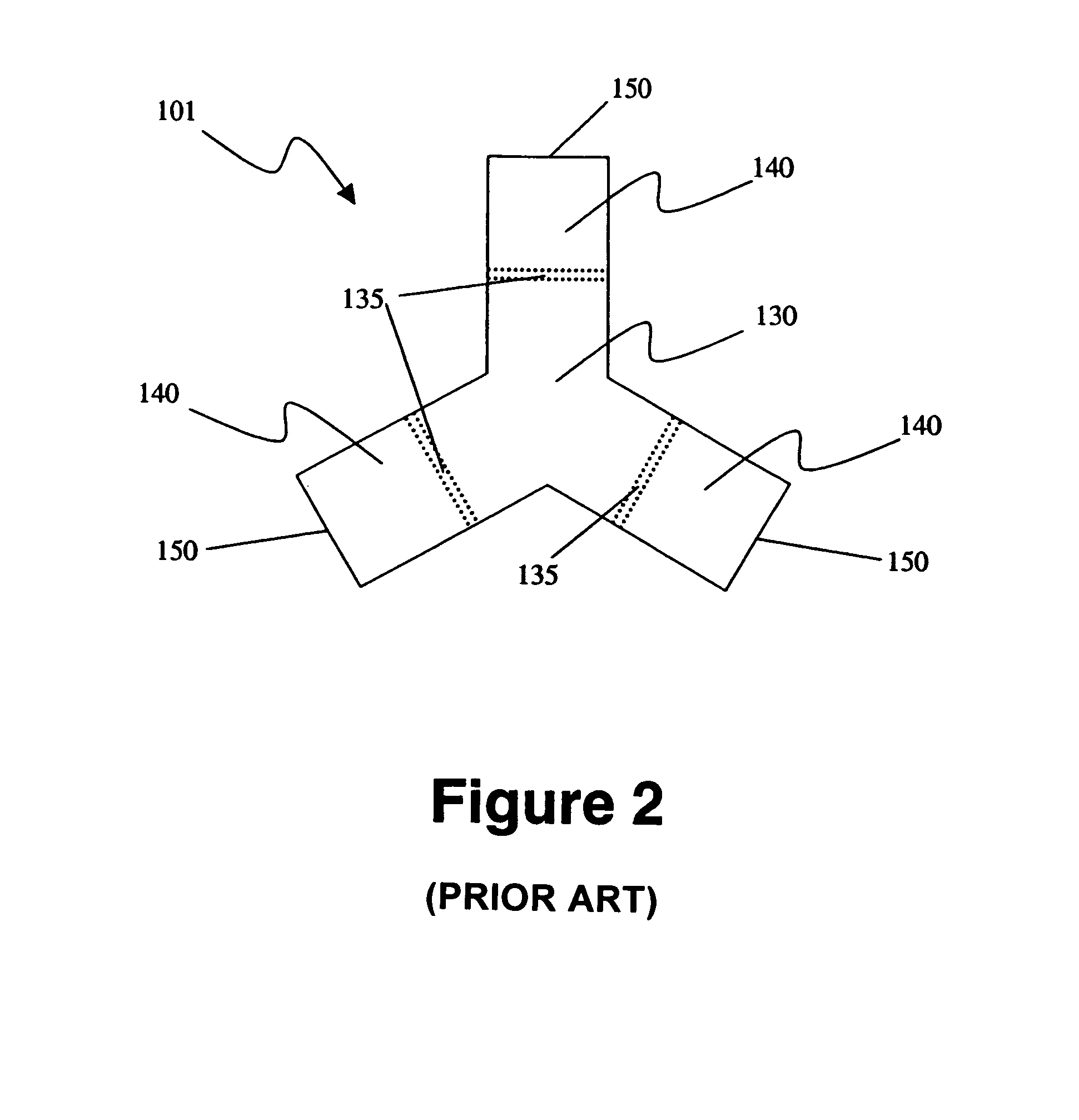Transformer-free waveguide circulator
a waveguide and transformer-free technology, applied in waveguide devices, basic electric elements, electrical apparatus, etc., can solve the problems of significant impact on the size, mass, and loss of the device, and achieve the effect of reducing the loss, reducing the loss, and eliminating the additional size and mass
- Summary
- Abstract
- Description
- Claims
- Application Information
AI Technical Summary
Benefits of technology
Problems solved by technology
Method used
Image
Examples
first embodiment
[0029]FIG. 3 shows a top view, and FIG. 7 shows an isometric view, of a multi-junction waveguide circulator 200 in accordance with the invention. It is similar in concept and description to the circulator of FIG. 1, but the quarter-wave dielectric transformer sections are not present. Additionally, there are no steps in the height or width of the waveguide structure. FIGS. 3 and 7 show a ferrite element 201 with a dielectric spacer 202 disposed on its top surface. Generally, a second dielectric spacer would be used, located underneath the ferrite element, hidden in FIG. 3 and shown in phantom in FIG. 7 The ferrite element 201 and dielectric spacers 202 are disposed within the conductive waveguide structure 200. The conductive waveguide structure 200 also includes three waveguide input / output ports 205. Although empirical matching elements are not shown, they may be disposed on the surface of the conductive waveguide structure as in the prior art. It is important to the note that whi...
second embodiment
[0033]FIG. 6 shows a top view of a multi-junction waveguide circulator in accordance with the invention. This circulator configuration is referred to as a single pole, four throw switch network (SP4T). An SP4T switch is comprised of three switching circulators and also referred to as a multi-junction circulator with three ferrite junctions. It is important to note that while the described embodiments illustrate the ferrite element as having a Y-shape with three legs, the invention can also include use of ferrite elements having a variety of differing shapes, including a triangular puck. While these shapes may not be considered to have legs or protruding portions as described above, they nevertheless have a particularly protruding portion which may operate in a manner similar to the toroid legs described above.
[0034]FIG. 6 shows a conductive waveguide structure 340 that includes three ferrite elements (also called toroids) 302, 304, and 306 configured in a manner so that at least one...
PUM
 Login to View More
Login to View More Abstract
Description
Claims
Application Information
 Login to View More
Login to View More - R&D
- Intellectual Property
- Life Sciences
- Materials
- Tech Scout
- Unparalleled Data Quality
- Higher Quality Content
- 60% Fewer Hallucinations
Browse by: Latest US Patents, China's latest patents, Technical Efficacy Thesaurus, Application Domain, Technology Topic, Popular Technical Reports.
© 2025 PatSnap. All rights reserved.Legal|Privacy policy|Modern Slavery Act Transparency Statement|Sitemap|About US| Contact US: help@patsnap.com



